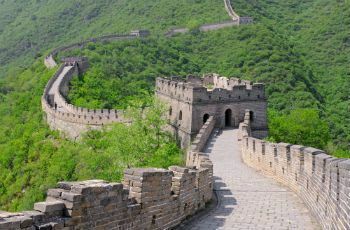From the second half of the 19th century onwards, the neocolonialism, in which the industrialized nations of Europe began to occupy and dominate the African continent, implementing a great process of exploitation of the Africa. This process – which is related to the development of capitalism – met with great resistance across the African continent.
Context
In the second half of the 19th century, Europe underwent intense transformations that resulted in great technological advances. European industry has experienced sharp growth as a result of the use of new energy sources. There were also advances in chemistry, communication technology, means of transport, etc. This technological development was known as Second Industrial Revolution.
The industrial development of this period contributed to the growth and strengthening of capitalism. A direct consequence of this process was neocolonialism, in which European nations, to support their growth industrial, set out to occupy the African and Asian continents to obtain sources of raw materials and new markets consumers.
Thus, a real race for the occupation of African territory was started. This occupation was justified by European nations as a civilization mission, however, this speech was intended to mask the real objective, which was to impose a intense economic exploration in Africa.
One of the consequences of this interest in the African territory was the realization of the Berlin Conference, a meeting that imposed the rules of occupation and determined some questions relating to Belgian rule over the Congo and the navigation of the Congo and Niger rivers. After the Berlin Conference, almost the entire African continent had been occupied (with the exception of Liberia and Ethiopia).
resistance movements
The occupation of the African continent by European nations it didn't happen peacefully. Across the continent, resistance movements that faced European domination exploded. The victory of the Europeans over these African movements occurred, mainly, as a result of their superior technology, which allowed them to facilitate communication and more modern weapons.
Below, we highlight some information about resistance movements in different parts of the African continent.
Egypt
In the 1880s, Egypt had a government aligned with the interests ottomans (Turks) and British people. The government led by Khedive (Ruler instituted by the Ottomans) Tawfik he faced, beginning in 1881, an army-led revolution aimed at liberating Egypt from growing British influence. The call Urabista Revolution was led by coronel Ahmad Urabi.
This move managed to unseat the Khedive Tawfik. However, Urabi did not know that Tawfik had asked the British for help. A short time later, the British invaded Egypt (the invasion took place in 1882), attacked the city of Alexandria and defeated the movement led by Urabi. From that defeat, the Egyptian resistance was weakened and Egypt was occupied by the British until the 1950s.
Do not stop now... There's more after the advertising ;)
Somalia
Somalia was now disputed by United Kingdom, France and after, Italy in the second half of the 19th century. The interest in the country was mainly due to its proximity to India and other important regions in Asia. Somali chiefs made a series of agreements with Europeans with the aim of reducing influence However, this strategy failed and European countries extended their domination over the interior of the Somalia.
Later, a resistance movement related to the concept of Jihad (Islam's holy war) emerged under the leadership of Sayyid Muhammad Abdullah Hassan. Hassan's struggle to free Somalia from European rule continued until his death in 1920 and served as a patriotic inspiration for later independence movements.
Libya
According to Valter Roberto Silverio|1|, in Libya, the resistance movement against the European presence lasted longer. This country was occupied by the ottomans when it was suddenly invaded by the italians in 1911. The Italians exercised precarious control over some Libyan cities and faced great resistance in the interior. Italy's control over Libya was only fully established in 1932, during the fascist government of Benito Mussolini.
Madagascar
The Kingdom of Madagascar was independent until the 1880s and, led by the Prime Minister Rainilaiarivony, was undergoing a process of modernization. Rainilaiarivony's intention was to guarantee the independence and sovereignty of Madagascar by transforming it into a “civilized” state in the Western mold.
However, the interests french over the island and the quest to eliminate British influence in the region led the French government to opt for invade Madagascar in 1883. Rainilaiarivony's government and the country's modernization process were dismantled by French colonization. The intense transformations that Malagasy society was facing ended up facilitating French rule over this territory.
Madagascar tried to secure its independence in two wars fought against the French, but was defeated. Resistance movements popped up in Malagasy society constantly until the 1920s. Madagascar's independence was only officially obtained in 1960.
|1| SILVÉRIO, Valter Roberto. Synthesis of the General History of Africa collection: 16th to 20th century. Brasília: UNESCO, MEC, UFSCar, 2013, p. 349-350.
by Daniel Neves
Graduated in History
Would you like to reference this text in a school or academic work? Look:
SILVA, Daniel Neves. "Movements to Resist Neocolonialism in Africa"; Brazil School. Available in: https://brasilescola.uol.com.br/historiag/movimentos-resistencia-ao-neocolonialismo-na-africa.htm. Accessed on July 27, 2021.


